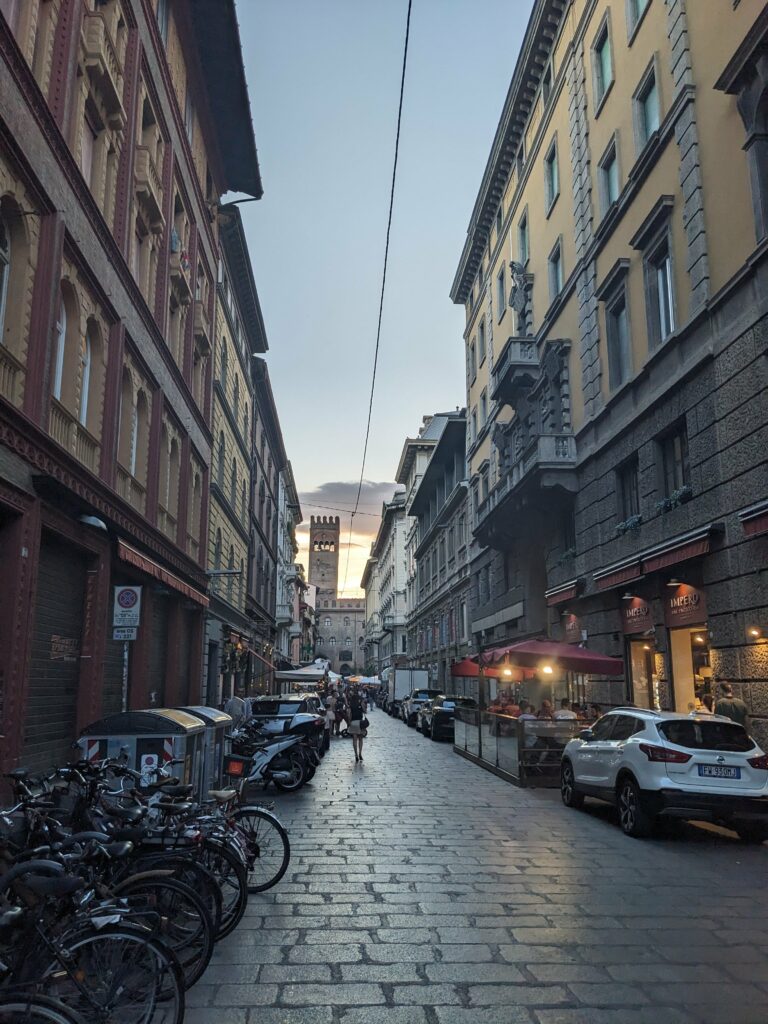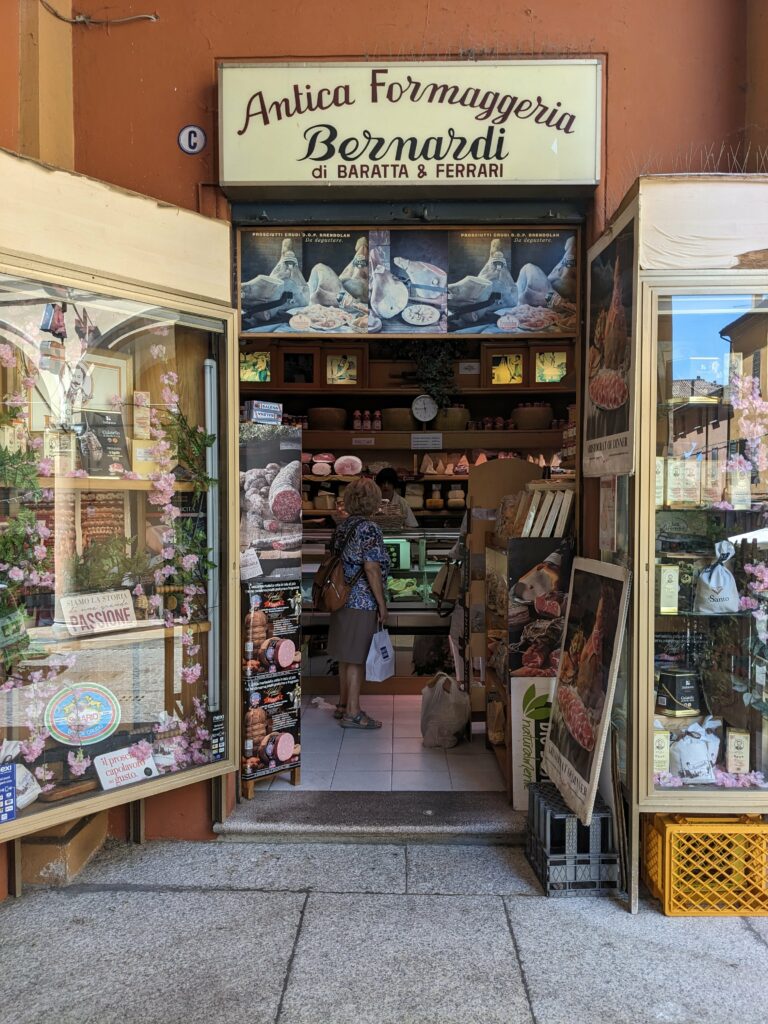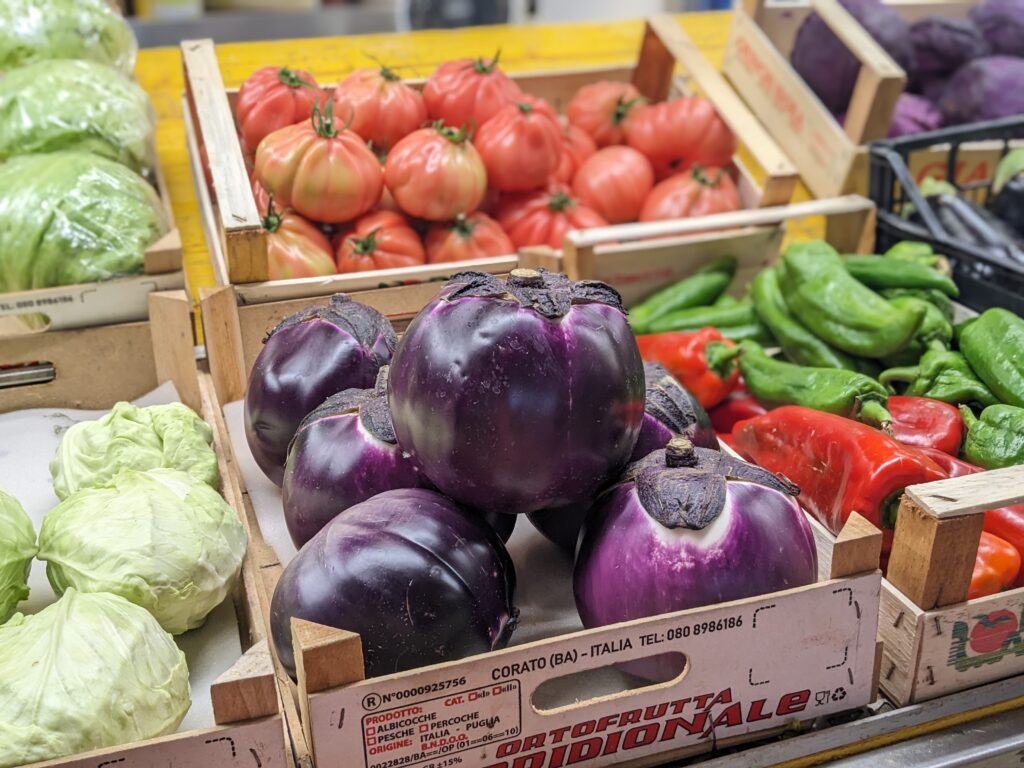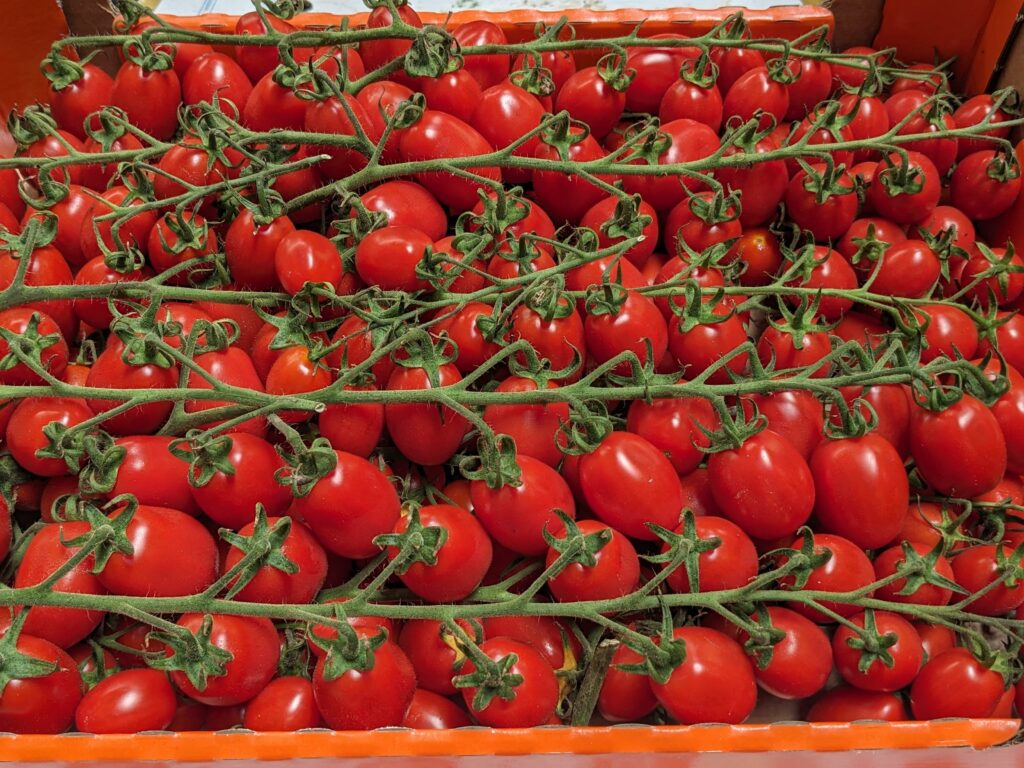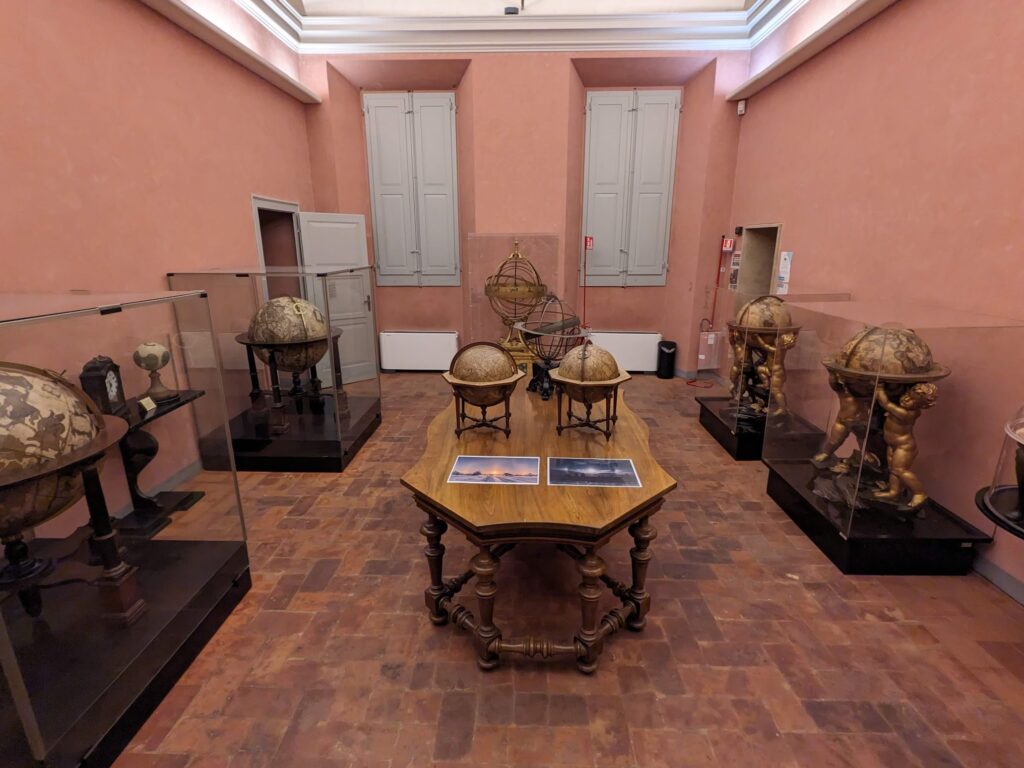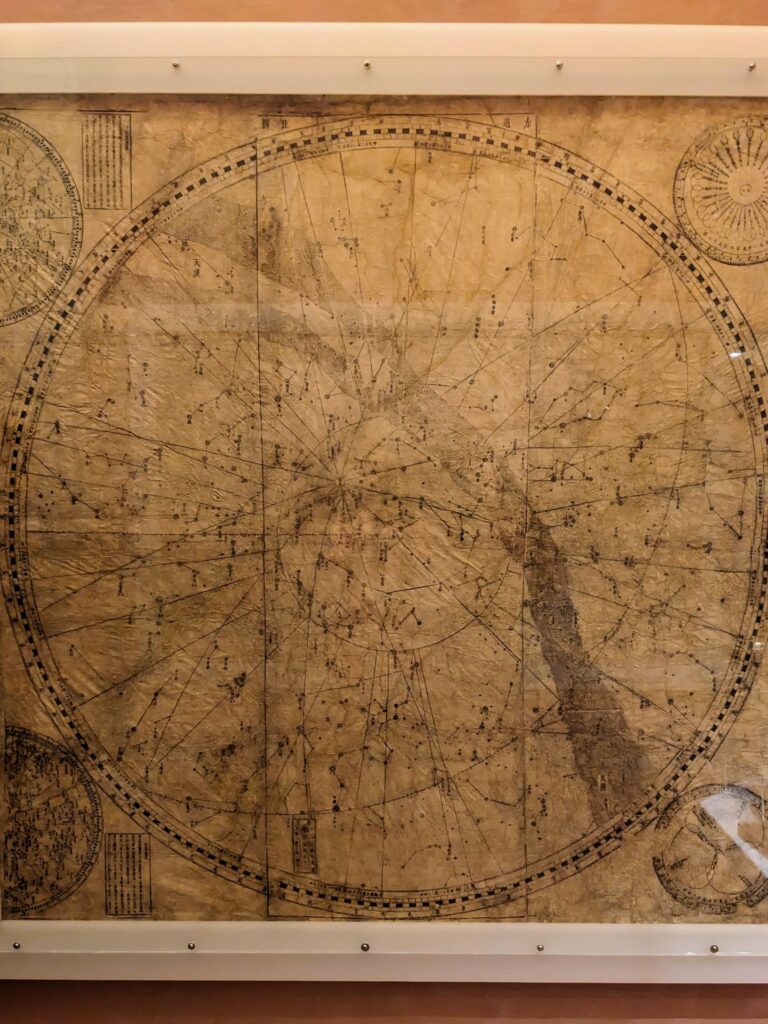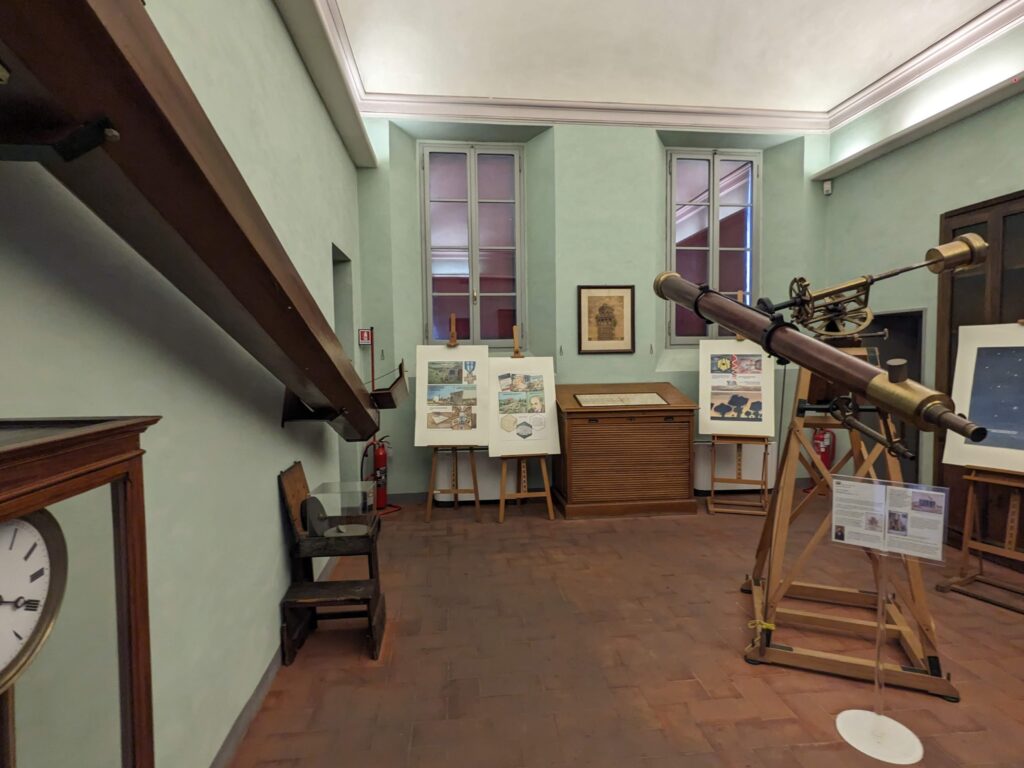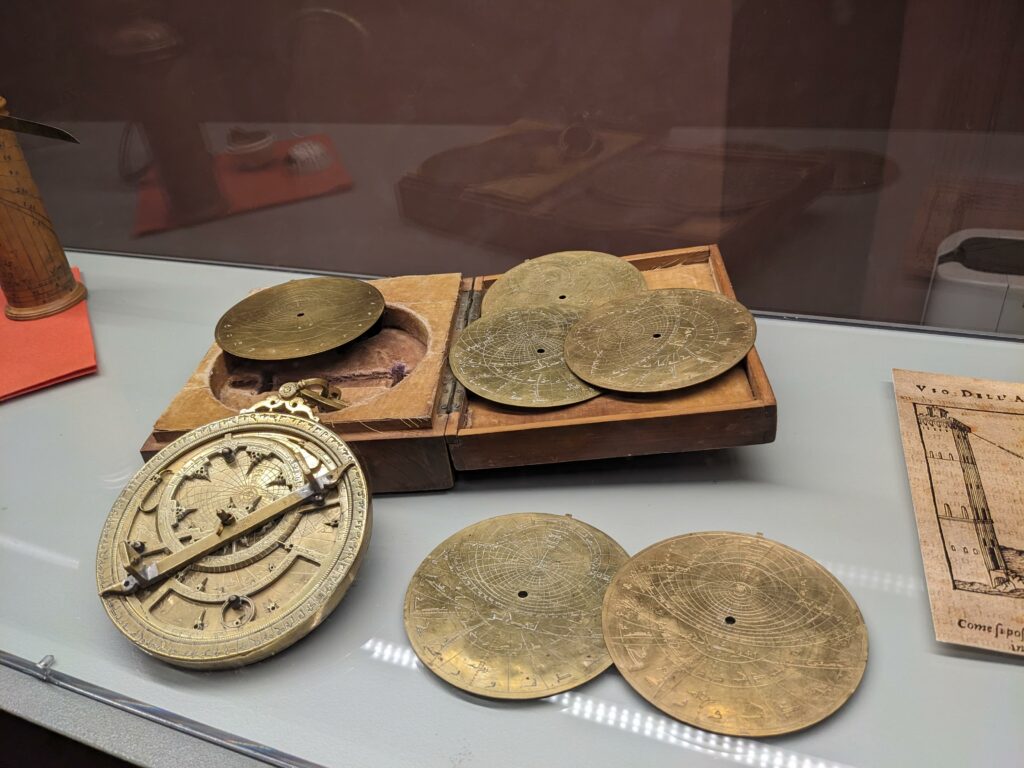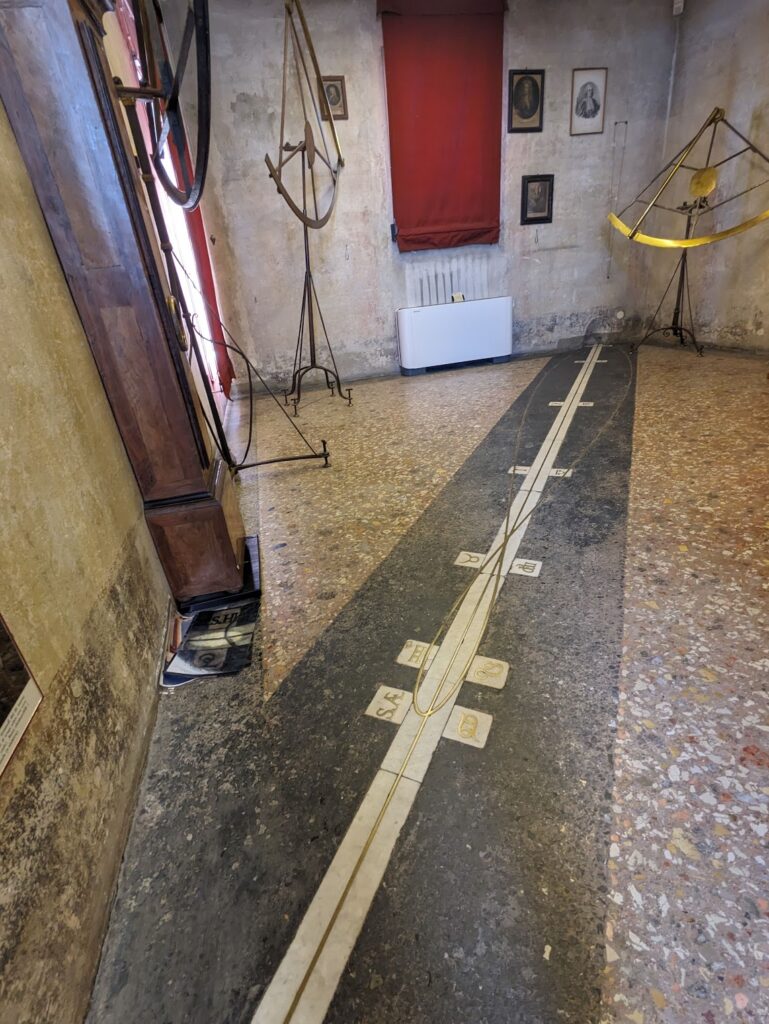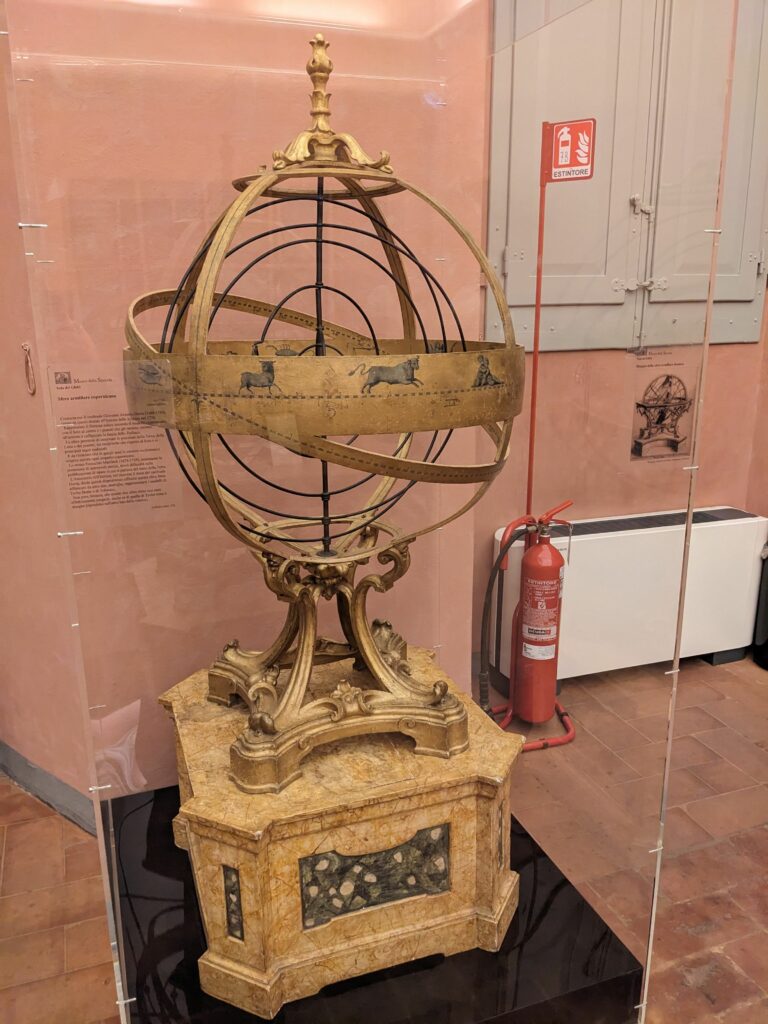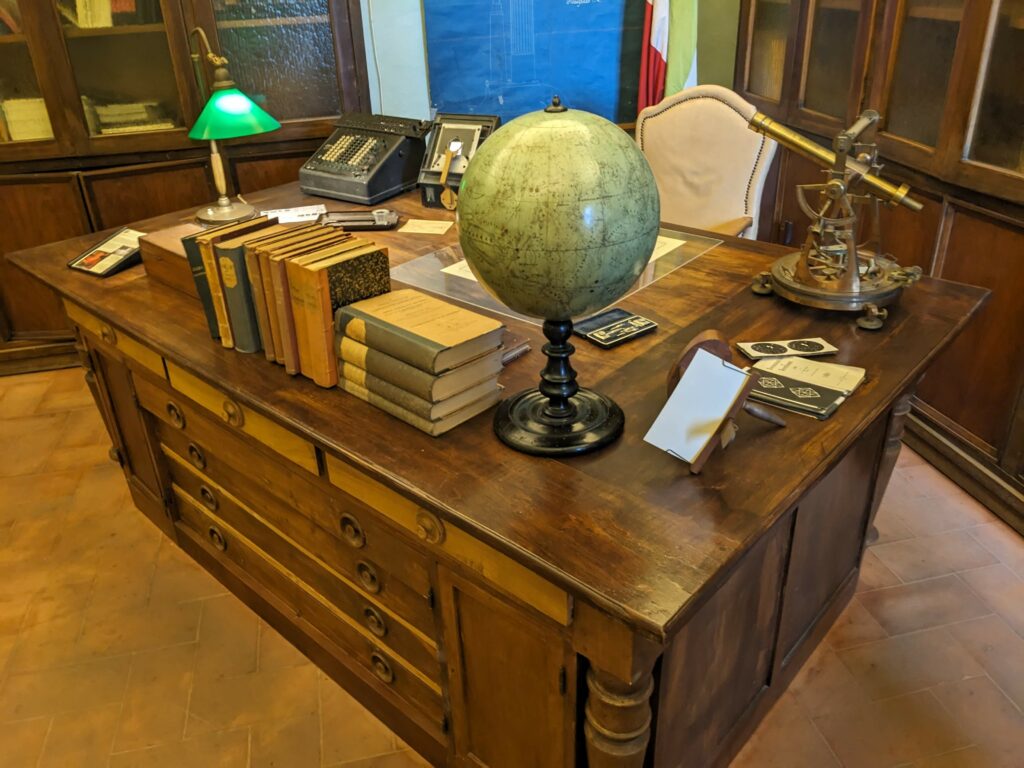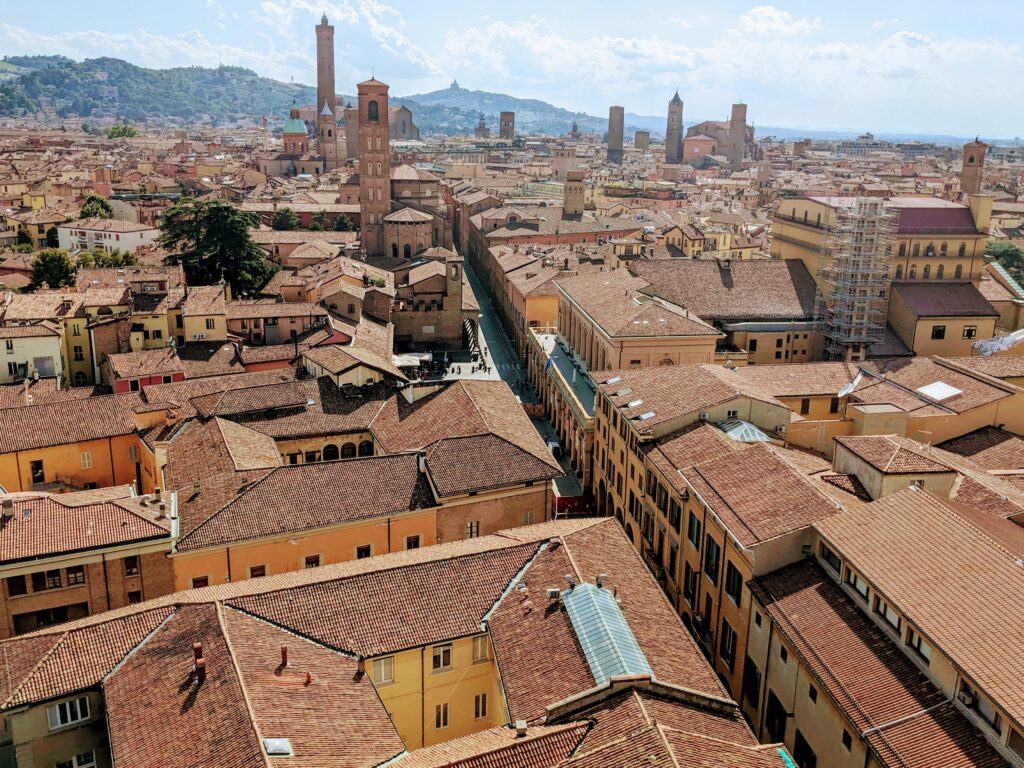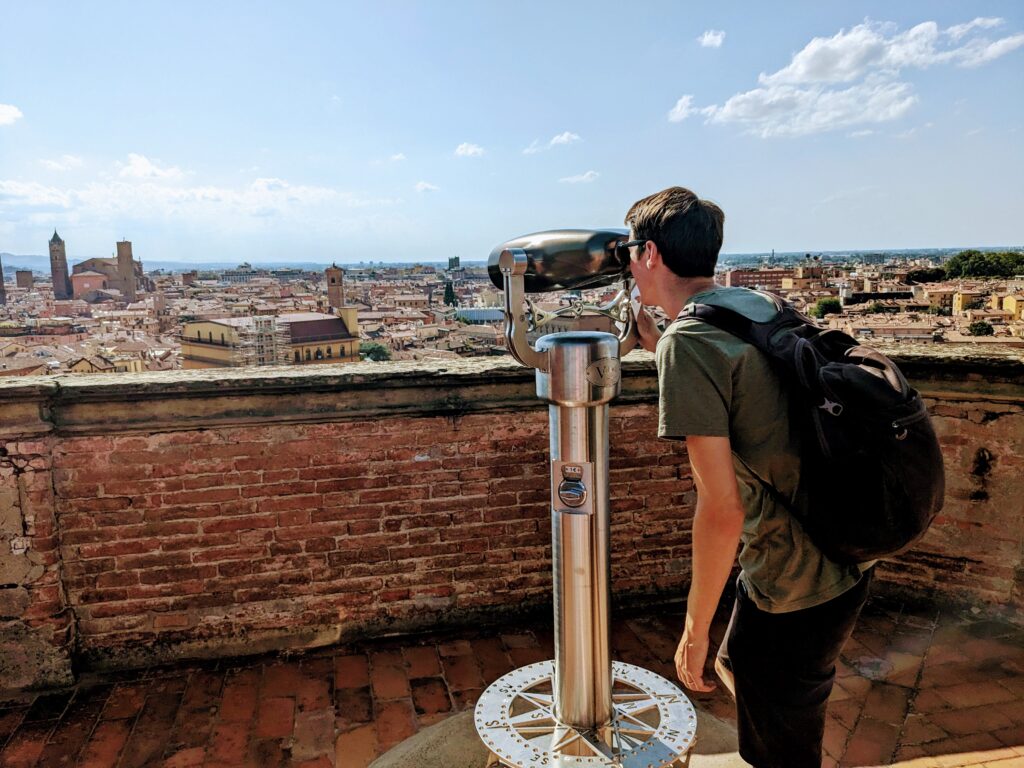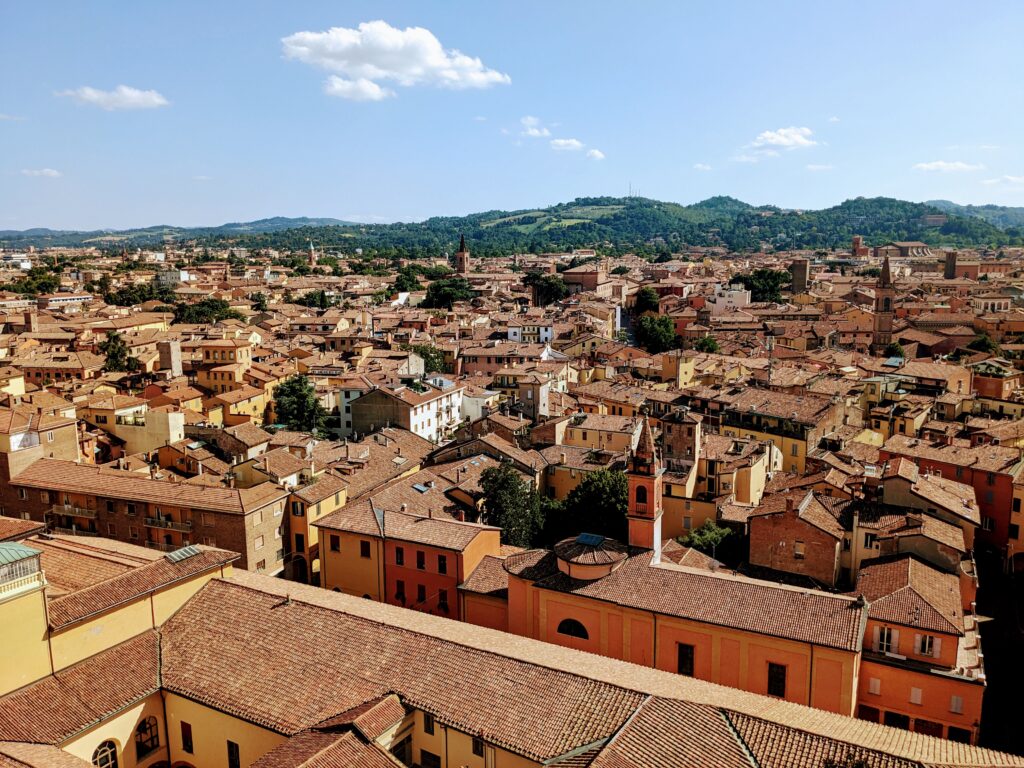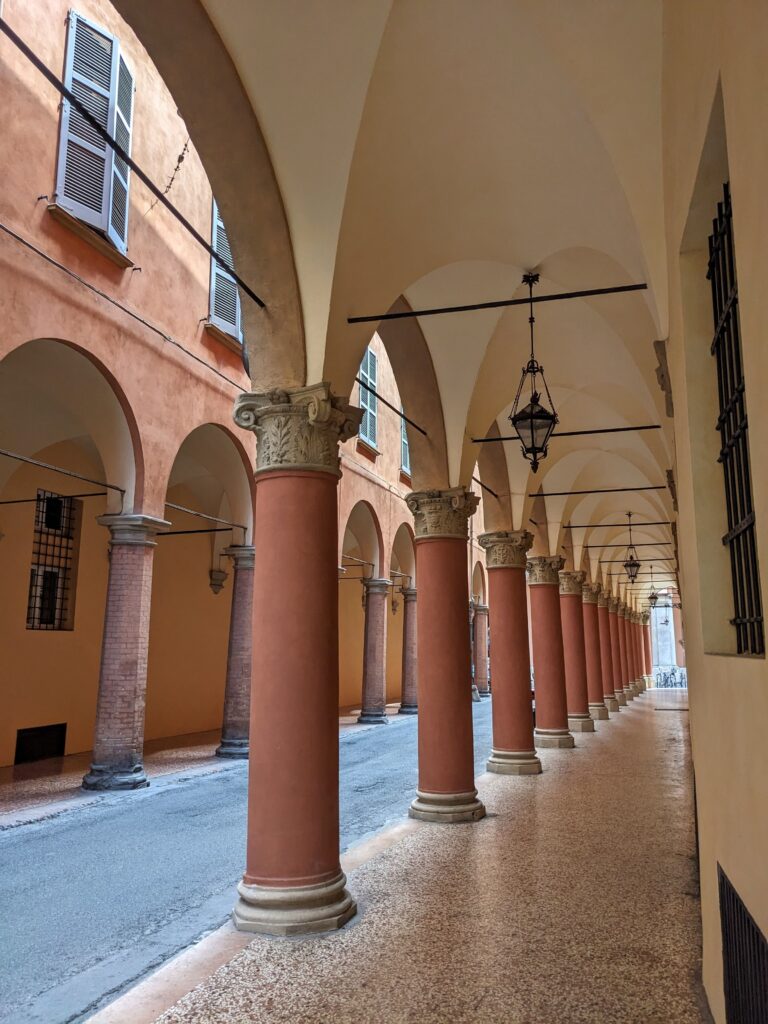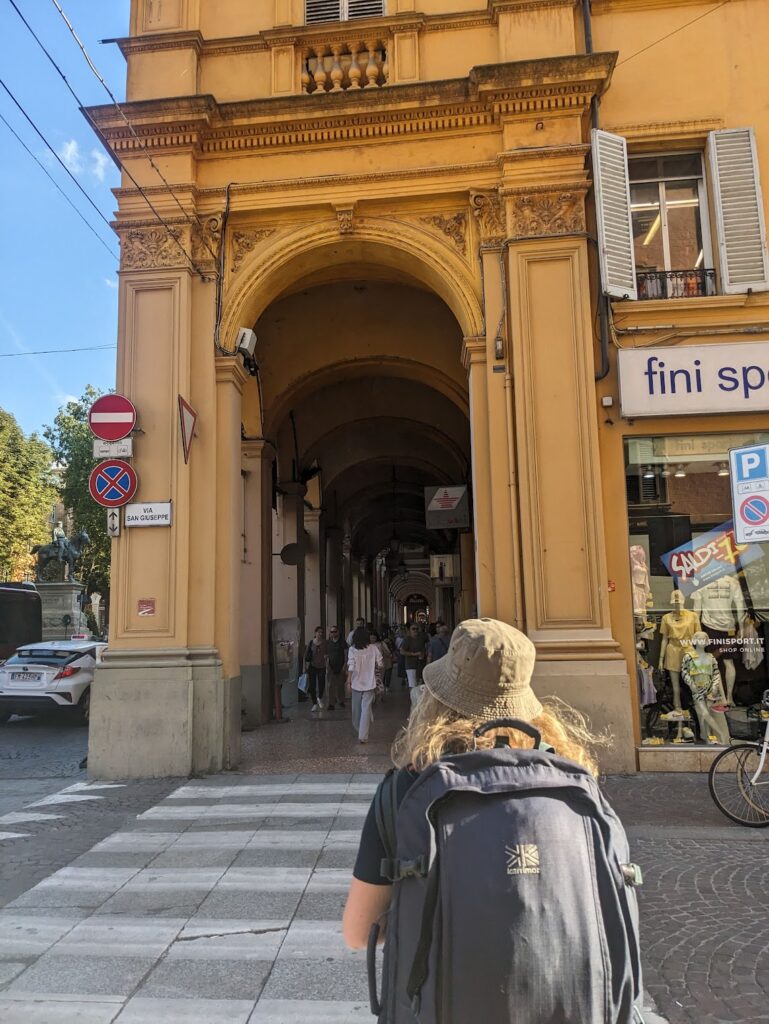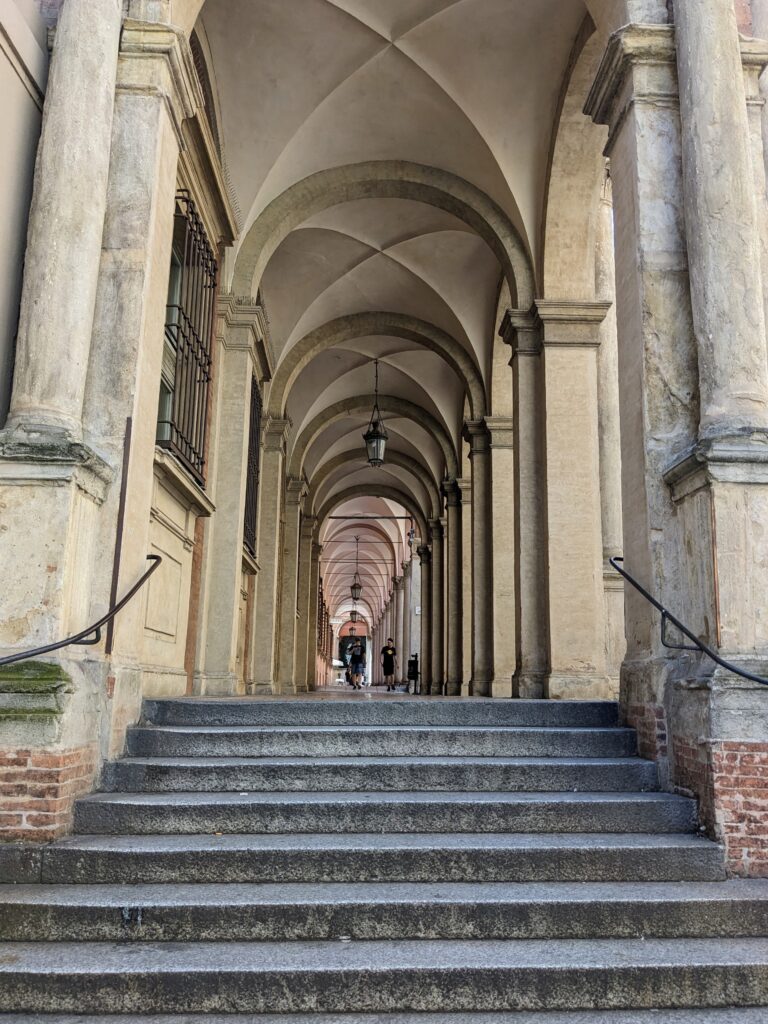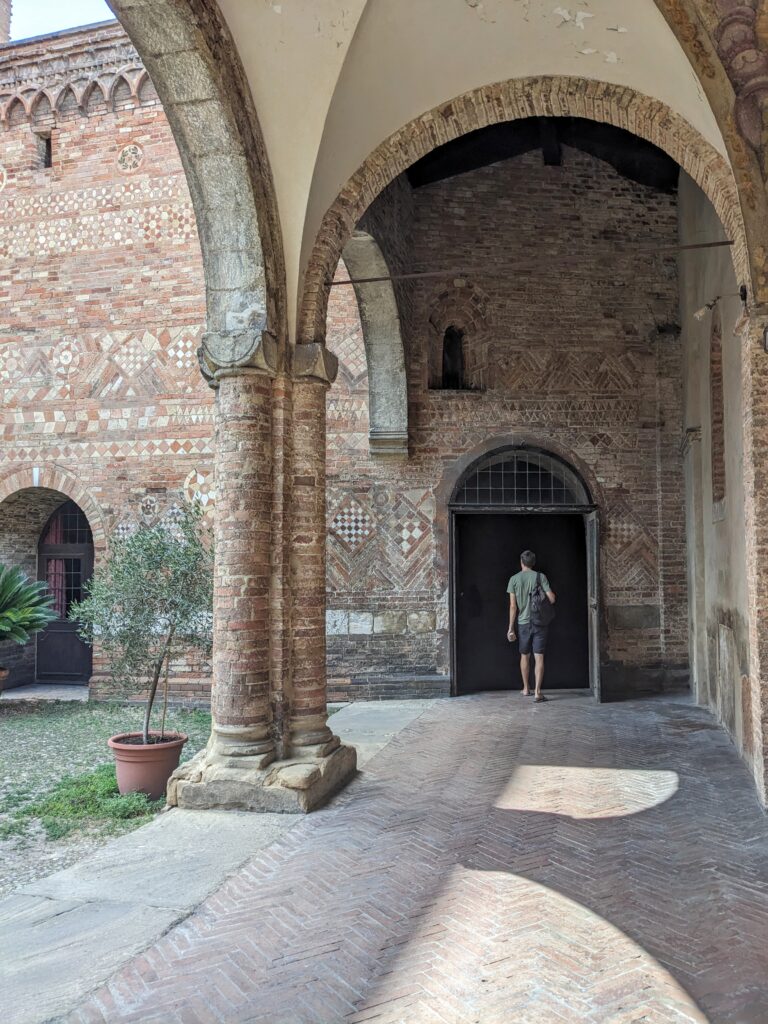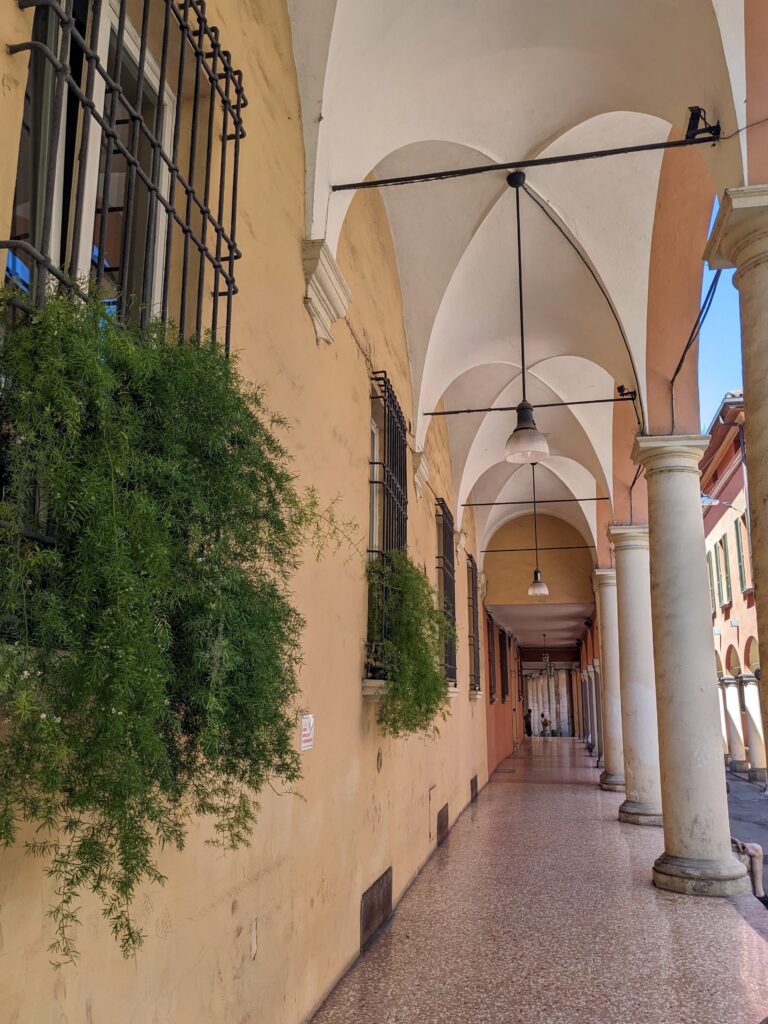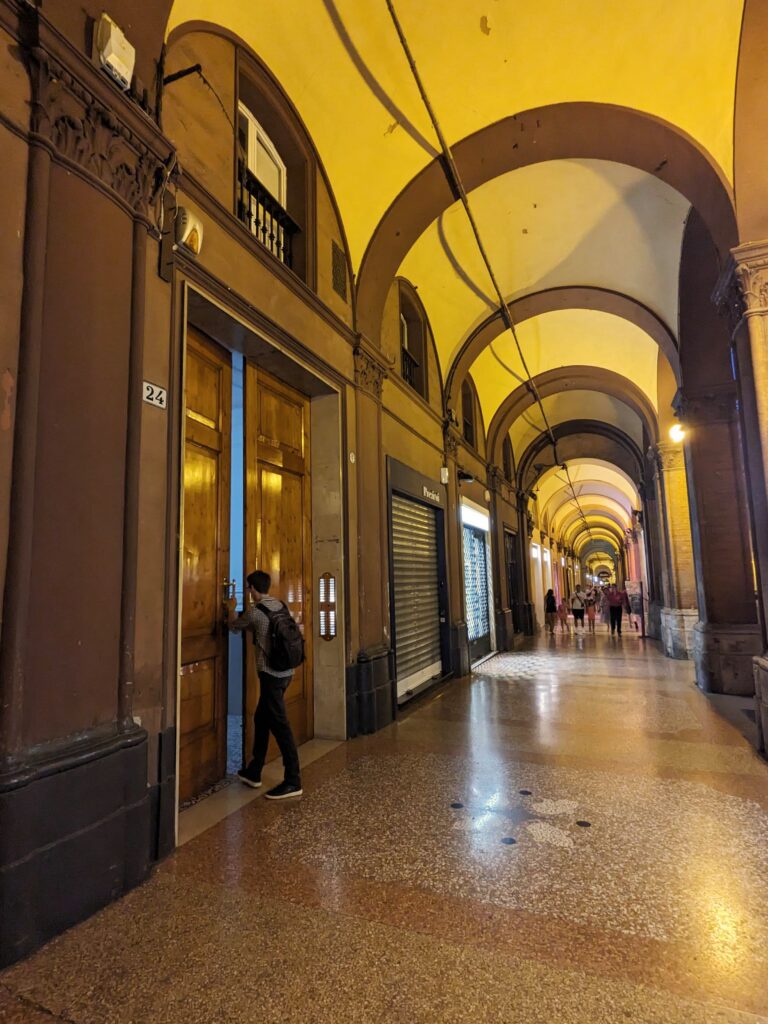Bologna is an interesting city: known for its food, for being home to the oldest university in the world, but also for being a big, noisy and gritty place. So, I was surprised to find just how beautiful it was, pairing endless porticoes that provide shelter from the fierce sun with gorgeous churches, edgy graffiti and a large, rowdy student population enjoying reasonably-priced food and drink in unpretentious bars and tabacchi. I shouldn’t have been surprised – Italy does this casual beauty SO well.


Bologna goes by many nicknames, so we tried to see a bit of each side of the city in our time there. The first one was easy…
🍝 La Grassa (the fat one)
Our much-anticipated pilgrimage to Bologna began with – what else? – a big plate of Tagliatelle al Ragù. We’d built up quite the appetite after spending the day at the Ferrari museums in Modena and Maranello, so we headed straight out to try Bologna’s most famous food export at Sfoglia Rina. Although the meaty sauce is known as bolognese elsewhere in the world, in its hometown it’s better known as ragù, and rather than the spaghetti to which we’re more accustomed in the UK, here it is customarily served with tagliatelle – the sauce clings to the wider, more textured pasta much better. It was rich, savoury and made for a super-satisfying meal, although if I’m honest I was a bit surprised that it didn’t taste more different to what I make at home – I’ll take that as a sign that I’m doing something right!
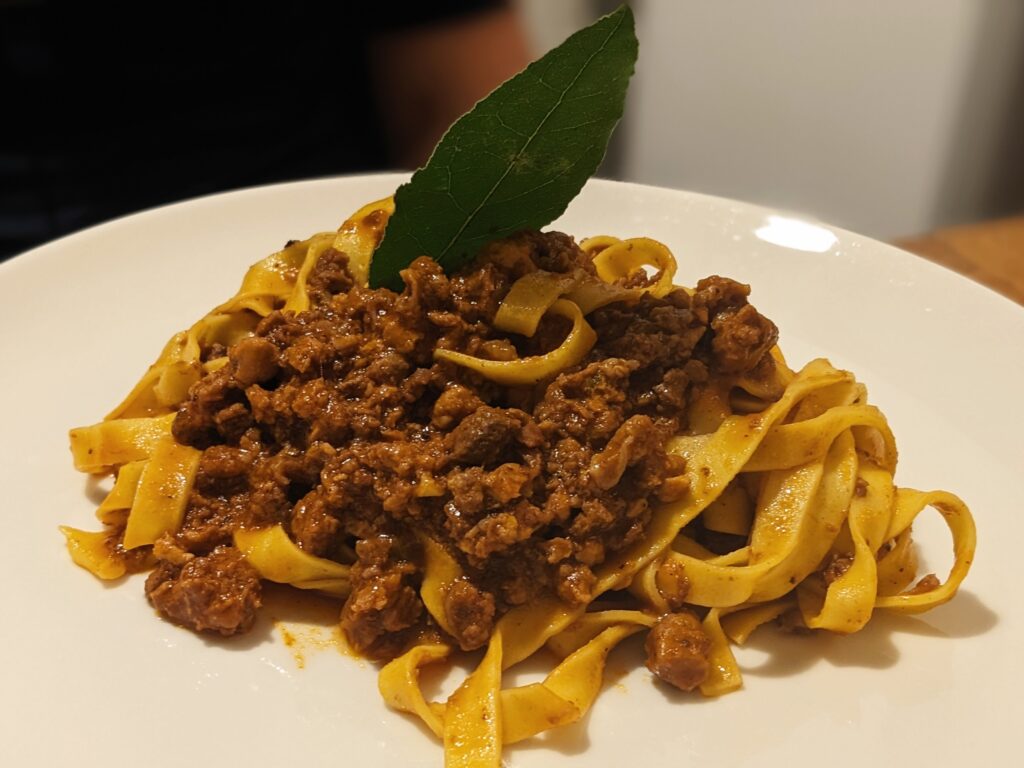
The next morning, we began our day with more food, visiting the Mercato delle Erbe. This was a great place to start – we needed to stock up on anti-scurvy measures (fruit) anyway, so browsing the other gorgeous produce and viewing an outstanding dog parade was just the cherry on top. It’s always nice to be shopping where the locals shop – and another thing I couldn’t get over was just how peaceful this area was, even though the central streets (mere steps away) were absolutely packed.
We headed back towards the centre for lunch, stopping to join the enormous queue outside Mò Mortadella Lab. The line moved incredibly fast – there were just three chaps making the sandwiches but they obviously had a good system and they were having a laugh while they were at it. Oli went for the mortadella, stracciatella, sundried tomato and basil version, while I went for mortadella, grilled aubergine, truffled stracciatella and rocket. We’d just passed the perfect spot to eat our spoils (a step under one of the porticoes), so we made a beeline for it and savoured our sandwiches while admiring the impeccable street scene and the lengthy photoshoot unfolding in the next arch along. Excellent free entertainment! I’d give the sandwiches a solid 8/10 – great flavour combos but they really hadn’t skimped on the stracciatella, which did make them a tad messy to eat.
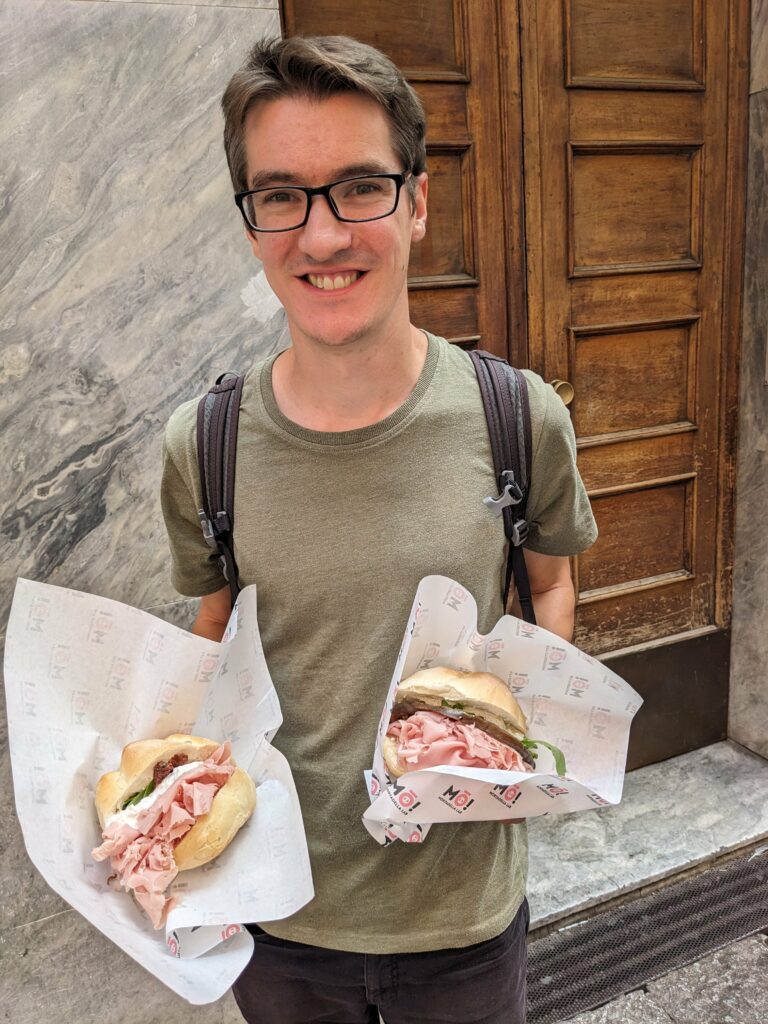
The final item on our must-eat list was tortellini in brodo, which literally translates as tortellini in broth. I had no idea that this was a traditional way to serve tortellini – unlike with the ragù, I’ve clearly been doing many things wrong in my preparation of these little filled pasta parcels! I also had no idea that there was a difference between tortellini (which are more delicate and typically filled with a meat, egg, parmesan and nutmeg mixture) and tortelloni (larger and typically filled with vegetarian goodies like ricotta and spinach) – I genuinely thought it was two different ways of spelling the same thing. Anyway, I digress – the dish was super-simple but Oli gave it a good review because the broth meant that each mouthful had a salty, meaty preview even before he’d bitten into each tortellino.
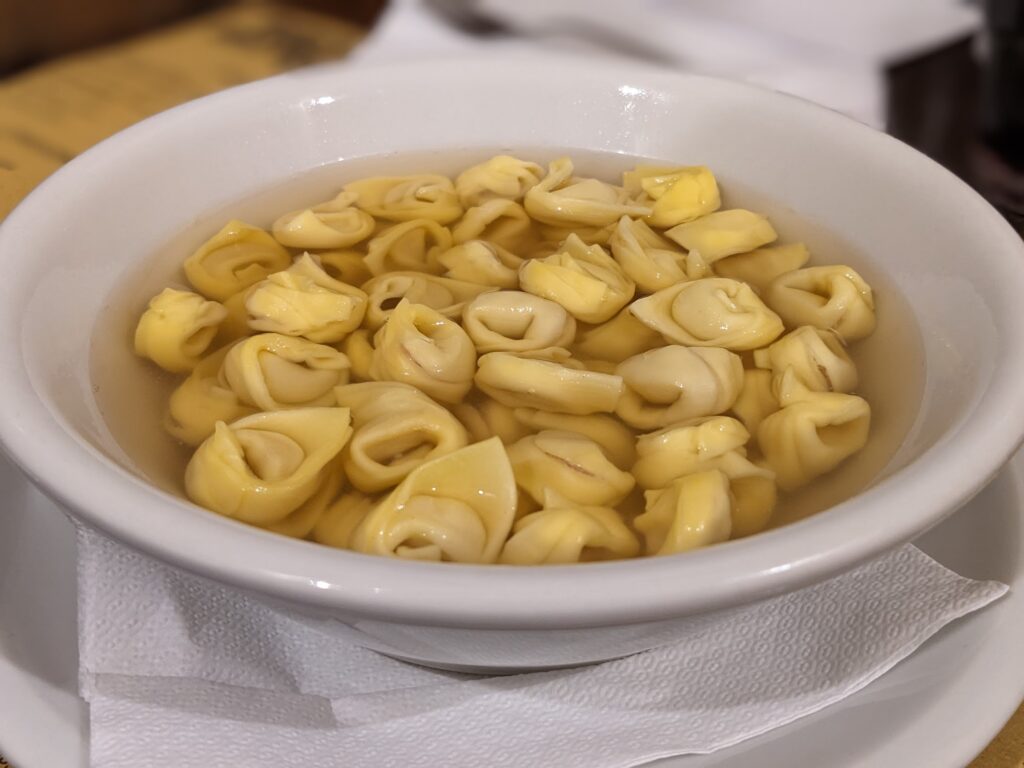
🎓 La Dotta (the learned one)
To explore another side of the city, we headed to the Observatory Museum, which sat within Palazzo Poggi at the University of Bologna. This tower was built in 1726 specifically to suit the requirements of the astronomers who would use it, and as we made our way up to the top, we saw reconstructions of experiments that were conducted there as well as some beautiful astronomical and navigational instruments from the 13th to 18th century. Probably my favourite item was a delicate Chinese rice paper map of the constellations from 1634. I’d never really considered before that it’s possible to join up the stars anyway you please, so it’s unsurprising that these were totally different than the constellations we would recognise. It’s always nice to see a different perspective on something! And despite the tours that had departed earlier in the day being fully booked, we somehow ended up with an essentially private tour of the tower, which was rather nice.
At the top of the tower, we emerged onto a sun-baked terrace that gave us a gorgeous view over the red rooftops of the old city, which leads nicely onto Bologna’s third nickname…
🧱 La Rossa (The red one)
Actually, this nickname apparently refers not just to Bologna’s beautifully rosy appearance, but also to the staunchly left-leaning politics in the city. I’ll stay well out of Italian politics in this post, but we did enjoy the architecture!
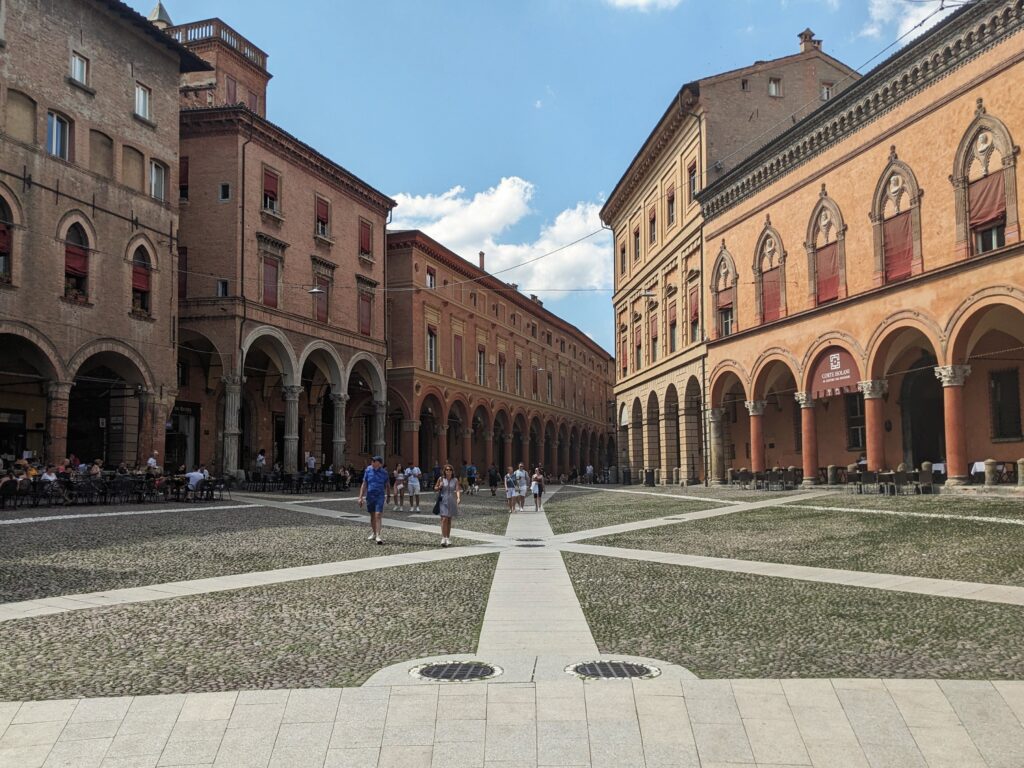
We also loved the UNESCO World Heritage porticoes that stretched for over 60 km (!) around the city. They provided much-needed shade and every one was different. We even stayed in an apartment tucked up in the eaves of one of the porticoes, which gave us a hidden vantage point over the streets below. This was a great spot to eat breakfast while we people-watched, hoping that no one glanced up and saw us in our pyjamas.
Finally, Bologna’s symbols are the two neighbouring medieval towers, Torre degli Asinelli and Torre Garisenda. The former is the tallest leaning medieval tower in the world, but the latter is even more wonky, leaning 3.2m over its 47m height! Given my wobbly knees performance in Pisa, we decided to save our pennies and didn’t climb the Torre degli Asinelli, which is open to the public.
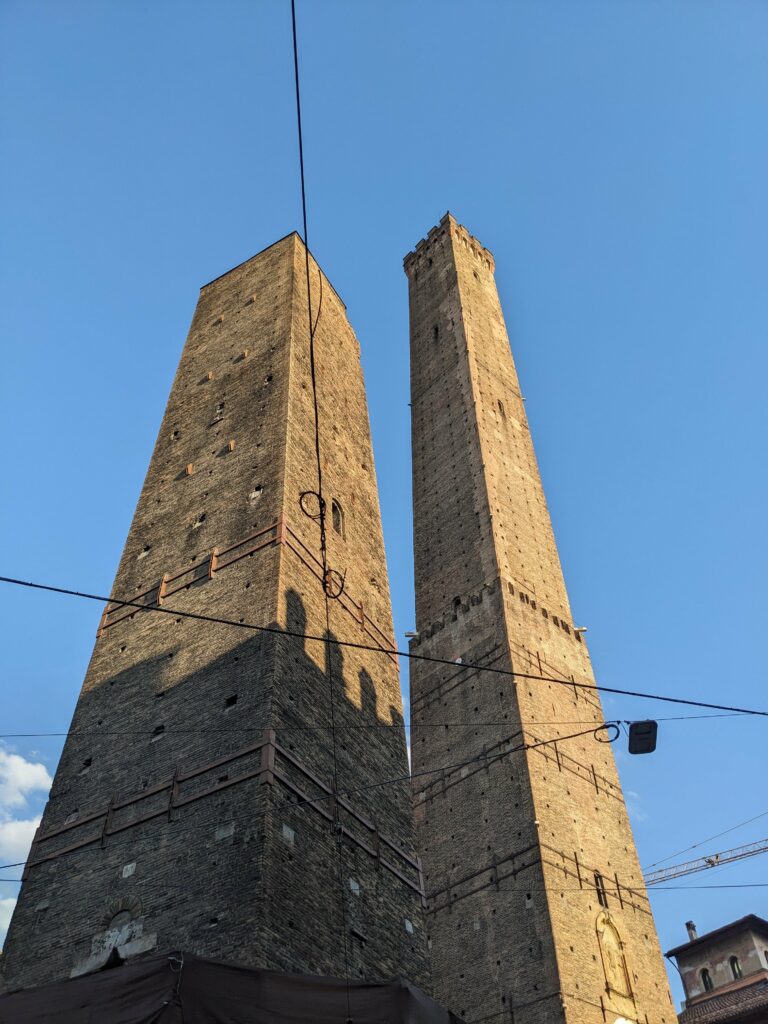
After a couple of days exploring the beautiful contradictions of Bologna, which far exceeded my already-high expectations, we hopped on another train towards the small town of Brisighella to explore another side of the Emilia-Romagna region.
